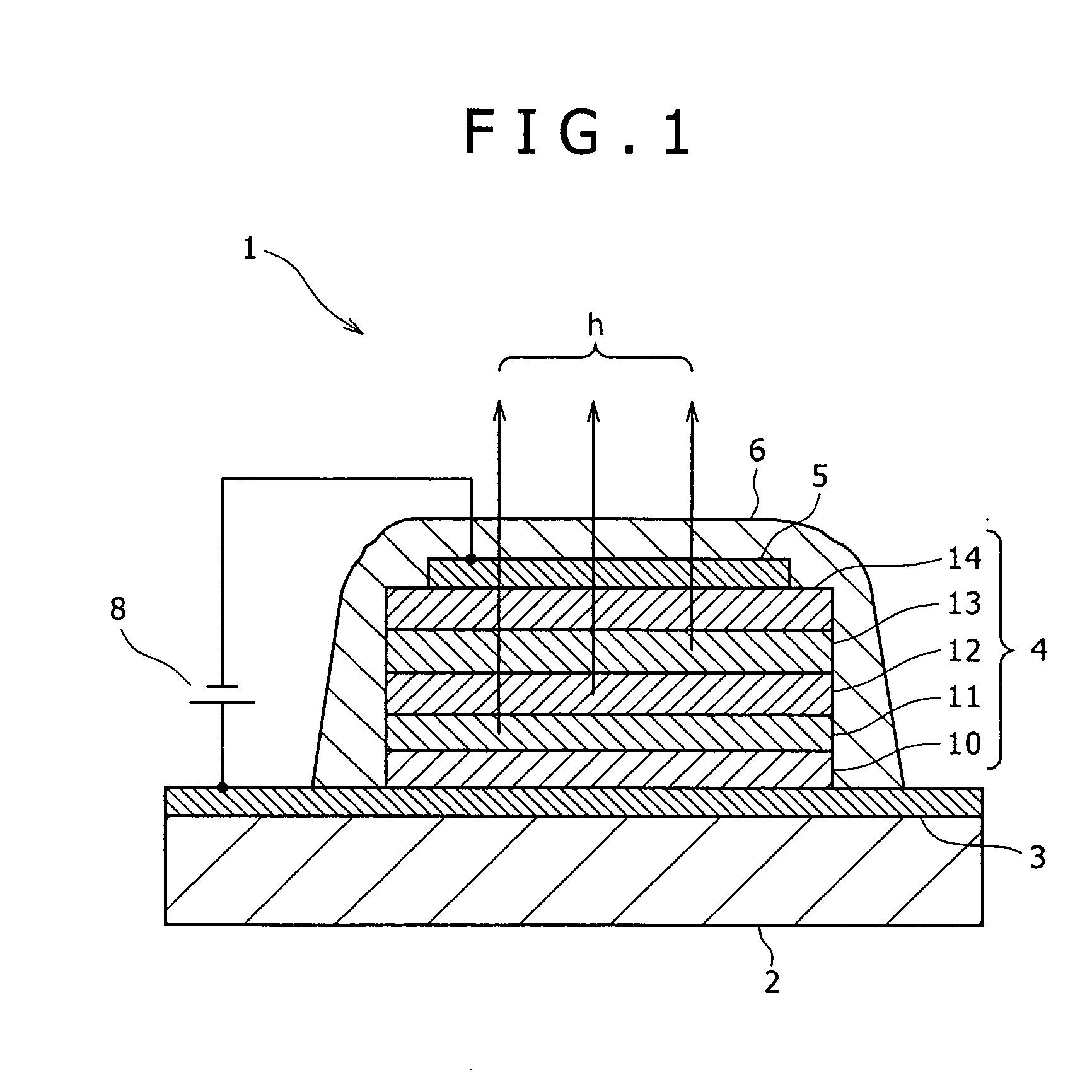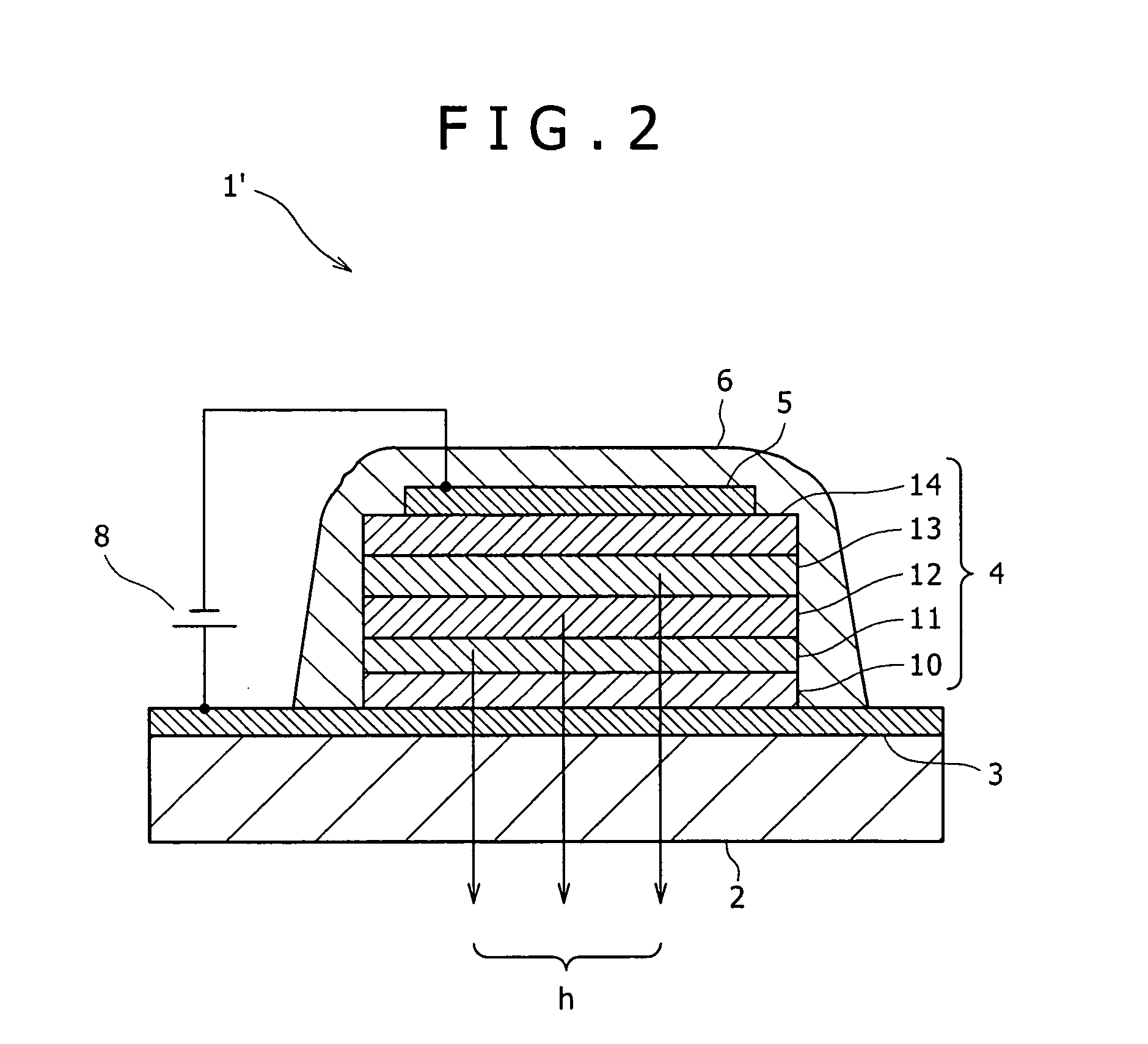Organic el device and display
a technology of organic el and display screen, which is applied in the direction of discharge tube luminescent screen, discharge tube/lamp details, luminescent composition, etc., can solve the problems of insufficient luminance efficiency and half life inability to achieve color reproduction performance comparable with crt, and insufficient balance of organic el device. , to achieve the effect of good balance, good balance and stable emitted
- Summary
- Abstract
- Description
- Claims
- Application Information
AI Technical Summary
Benefits of technology
Problems solved by technology
Method used
Image
Examples
example 1
[0067] In Example 1, the bottom emission type organic EL device 1′ described referring to FIG. 2 was manufactured as follows.
[0068] First, a cell for an organic EL device was produced in which a film of ITO (about 100 nm thick) as an anode 3 was formed on a substrate 2 composed of a 30 mm×30 mm glass plate, and other region than a central 2 mm×2 mm light emission region of the anode 3 was masked with an insulation film (omitted in the figure) by use of a photosensitive organic insulation material. Next, a metallic mask having an opening was disposed on the upper side of and in proximity to the substrate 2 in the condition where the opening was matched to the exposed portion of the anode 3 (ITO) to be each light emission region, and the following organic layers were sequentially formed by a vacuum evaporation method under a vacuum of 10−4 Pa or below.
[0069] First, as the hole transport layer 10, a film of m-MTDATA (4,4′,4″-tris(3-methylphenylphenylamino)-triphenylamine) represented...
example 2
[0079] In Example 2, an organic EL device 1′ was manufactured in the same manner as above, except that the blue light emitting layer 13 in Example 1 was replaced by a two-layer structure of a positive and negative charge transporting blue light emitting layer and an electron transporting light emitting layer which will be described below, for obtaining a good balance of white light emission.
[0080] In Example 2, the organic EL device 1′ was manufactured following the same procedure as that in Example 1, except that the blue light emitting layer 13 was formed by the following procedure. First, a co-deposition film composed of a mixture of DPVBi and α-NPD in a mixing ratio of 1:1 as a host doped with 3% of BCzVBi as a blue light emitting material was formed in a thickness of 10 nm. Thereafter, a co-deposition layer composed of DPVBi as a host doped with 3% of BCzVBi as a blue light emitting material was formed in a thickness of 20 nm, to obtain the blue light emitting layer 13 having ...
PUM
| Property | Measurement | Unit |
|---|---|---|
| thick | aaaaa | aaaaa |
| thick | aaaaa | aaaaa |
| thick | aaaaa | aaaaa |
Abstract
Description
Claims
Application Information
 Login to View More
Login to View More - R&D
- Intellectual Property
- Life Sciences
- Materials
- Tech Scout
- Unparalleled Data Quality
- Higher Quality Content
- 60% Fewer Hallucinations
Browse by: Latest US Patents, China's latest patents, Technical Efficacy Thesaurus, Application Domain, Technology Topic, Popular Technical Reports.
© 2025 PatSnap. All rights reserved.Legal|Privacy policy|Modern Slavery Act Transparency Statement|Sitemap|About US| Contact US: help@patsnap.com



